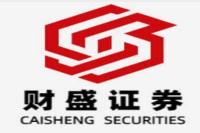China's National News Roundup: Key Developments and Insights
Meta Description: Dive deep into China's latest national and international news, including updates on Hainan's development, Macau's social progress, rural revitalization, and global events. Expert analysis and insights included. #ChinaNews #Hainan #Macau #RuralRevitalization #GlobalAffairs
This isn't just another news summary; it's a deep dive into the heart of China's current affairs, offering insightful analysis and context you won't find anywhere else. We're going beyond the headlines, peeling back the layers to understand the why behind the what. From President Xi Jinping's focus on Hainan's development to the remarkable strides in Macau's social welfare system, we'll unpack the significant events shaping China's trajectory and their ripple effects across the globe. We'll also examine the ongoing global crises, connecting them to China's domestic policies and international relations. This isn't just a recitation of facts; it's a narrative woven with expertise, providing a nuanced perspective on the complex tapestry of current events. Prepare to be informed, engaged, and maybe even surprised by the interconnectedness of it all! We'll explore the intricate details, offering a level of analysis that goes beyond the surface, providing you with a comprehensive understanding of the forces shaping China and its place in the world. Get ready for a journey into the heart of the matter, where data meets insight, and news transforms into understanding. Think of this as your insider's guide to the week's most impactful news, presented in a clear, concise, and engaging manner. Let's explore the intricate details together!
Hainan's Development: A New Chapter in China's Modernization
President Xi Jinping's emphasis on Hainan's development as a "three districts and one center" – a comprehensive pilot zone for deepening reforms and opening up, a national ecological civilization pilot zone, an international tourism consumption center, and a service and support zone for major national strategies – signals a significant push for economic diversification and sustainable growth. This isn't just about economic expansion; it's a strategic move to showcase a unique model of Chinese-style modernization. Xi's directives underscore the importance of balancing economic progress with environmental protection, a crucial aspect of China's long-term vision. The "pre- and post-closure" reforms highlight the complexities involved in creating a truly integrated free trade port and the meticulous planning required to minimize potential disruptions. Essentially, Hainan is being positioned as a shining example of how China can achieve rapid economic growth without compromising environmental sustainability. This ambitious project demands a delicate balance between attracting foreign investment, fostering innovation, and ensuring the preservation of Hainan's unique ecological environment. The pressure is on to deliver tangible results, setting a precedent for future development projects within the country.
The strategic importance of Hainan cannot be overstated. Its geographical location makes it an ideal hub for trade and tourism, and its development aligns perfectly with China's Belt and Road Initiative (BRI). The success of this project will serve as a blueprint for other similar initiatives across the country, impacting regional development and international trade. The challenge lies in executing this plan effectively, overcoming potential hurdles such as bureaucratic inefficiencies and regulatory inconsistencies.
What's particularly interesting is the emphasis on "continued emancipation of thought and innovation." This implies a departure from traditional, more centralized planning models, encouraging a more dynamic and responsive approach to development. This might involve greater autonomy for local officials, fostering a more bottom-up approach to problem-solving and innovation. This shift towards a more decentralized, yet still strategically aligned, approach is a compelling aspect of the Hainan initiative. This approach, however, necessitates strong oversight and coordination to ensure consistent implementation across different sectors. It's a bold experiment, and its success will have wide-ranging impacts on China's overall development strategy.
Macau's Social Welfare: A Unique "One Country, Two Systems" Model
Macau's impressive progress in social welfare, as highlighted by President Xi Jinping's focus on the well-being of its citizens, showcases a unique application of the "One Country, Two Systems" principle. The significant investments in employment, housing, healthcare, social security, and public services demonstrate a commitment to equitable distribution of the benefits of economic growth. This isn't merely charity; it's a strategic investment in social stability and long-term prosperity. A well-cared-for populace is more likely to be productive and contribute to the overall economic strength of the region.
Macau's approach to social welfare is particularly noteworthy because it integrates elements of both Western-style social safety nets and traditional Chinese community values. This blended approach, focusing on both individual needs and collective responsibility, has proven remarkably effective in creating a more inclusive and harmonious society. The "tightly woven safety net" mentioned in the original report speaks volumes about the comprehensiveness of the programs and the government's proactive approach to addressing social needs.
The success of Macau’s model lies in its adaptability. It's not a rigid, one-size-fits-all solution but a dynamic system capable of adjusting to evolving social and economic needs. This adaptability is likely due to the close interaction between the government and its citizens, facilitating open dialogue and effective feedback mechanisms for policy adjustments. This continuous feedback loop ensures that programs remain relevant and effective, contributing to the overall sustainability of the system.
The ongoing challenge for Macau lies in balancing its unique social welfare model with the need to diversify its economy beyond gaming. Maintaining this level of social support while fostering a more robust and sustainable economic base requires careful strategic planning and prudent financial management. The government needs to continually innovate and adapt its strategies to ensure long-term economic stability and continued improvements in the social welfare system.
Rural Revitalization: Progress and Challenges
The significant progress in rural revitalization is a testament to China's commitment to tackling poverty and inequality. The emphasis on increasing agricultural efficiency, boosting farmer incomes, and invigorating rural areas demonstrates a holistic approach to rural development. This isn't just about economic development; it's about improving the quality of life for millions of rural residents. The success of this project is crucial for maintaining social harmony and fostering sustainable national development. The strategy focuses on more than just immediate economic gains; it addresses long-term issues of infrastructure development, access to education and healthcare, and environmental sustainability. This multifaceted approach significantly contributes to the overall balance and resilience of the Chinese economy.
However, challenges remain. The vast geographical scale of rural China and the diversity of its regions require tailored solutions, making uniform implementation difficult. Addressing the issue of urban-rural disparity requires sustained effort and investment. Furthermore, ensuring sustainable economic growth in rural areas while preserving traditional culture and the environment necessitates a carefully calibrated approach.
The success of China's rural revitalization efforts will depend on its ability to adapt to changing circumstances, address evolving needs, and ensure equitable distribution of resources. It's a complex and ongoing process, requiring sustained investment, innovative solutions, and a long-term perspective. This is not a sprint, but rather a marathon requiring consistent effort and adaptation to achieve long-term success.
Global Events: A Shifting Geopolitical Landscape
The ongoing conflicts in the Middle East and Eastern Europe underscore the fragility of global peace and stability. The escalating humanitarian crisis in Gaza and the ongoing war in Ukraine highlight the devastating human cost of conflict and displacement. These events have significant implications for global energy markets, trade flows, and international relations. These developments necessitate a measured and multifaceted approach from China and other nations to promote de-escalation and prevent further suffering. It is vital to engage in diplomatic efforts to promote peaceful resolutions, providing humanitarian aid where possible.
China's response to these global events is carefully calibrated between its own national interests and its role as a responsible member of the international community. Navigating this complex geopolitical landscape requires a nuanced understanding of various stakeholders' interests and a commitment to promoting a stable and peaceful international order. Finding a balance is a crucial challenge for China's multilateral diplomacy.
FAQ: Addressing Your Questions
Q1: What is the significance of Hainan's development as a free trade port?
A1: Hainan's development is significant as it's a key component of China's broader strategy to deepen reforms, promote economic diversification, and showcase a new model of sustainable development. Its success will serve as a benchmark for future projects.
Q2: How does Macau's social welfare system differ from Western models?
A2: Macau's system blends Western-style social safety nets with traditional Chinese community values, creating a unique and effective approach to social support.
Q3: What are the major challenges in China's rural revitalization efforts?
A3: The vast scale and diversity of rural China, alongside persistent urban-rural disparities, pose significant challenges requiring tailored solutions and sustained investment.
Q4: How are global conflicts impacting China's foreign policy?
A4: Global conflicts create complex challenges for China, requiring it to balance national interests with its role as a responsible member of the international community.
Q5: What role does technology play in China's development strategies?
A5: Technology plays a crucial role across all aspects, from streamlining administrative processes in Hainan to enhancing agricultural efficiency in rural areas. Innovation is a key driver across the board.
Q6: What are the long-term implications of the current geopolitical climate?
A6: The current geopolitical instability has profound implications for global trade, energy security, and international cooperation, creating uncertainty and necessitate proactive diplomatic strategies.
Conclusion: Navigating a Complex World
China's domestic and international landscape is rapidly evolving, presenting both opportunities and challenges. The government's strategic focus on Hainan's development, Macau's social progress, and rural revitalization highlights a commitment to multifaceted and sustainable growth. However, the ongoing global conflicts demand a careful and nuanced approach to international relations. The coming years will be pivotal in shaping China's future, testing its ability to navigate a complex world and achieve its ambitious goals. Staying informed and understanding the nuances of these developments is crucial for anyone seeking to understand China's role in the 21st century. The news presented here is just a snapshot of a dynamic and ever-changing situation, requiring continuous monitoring and analysis.



